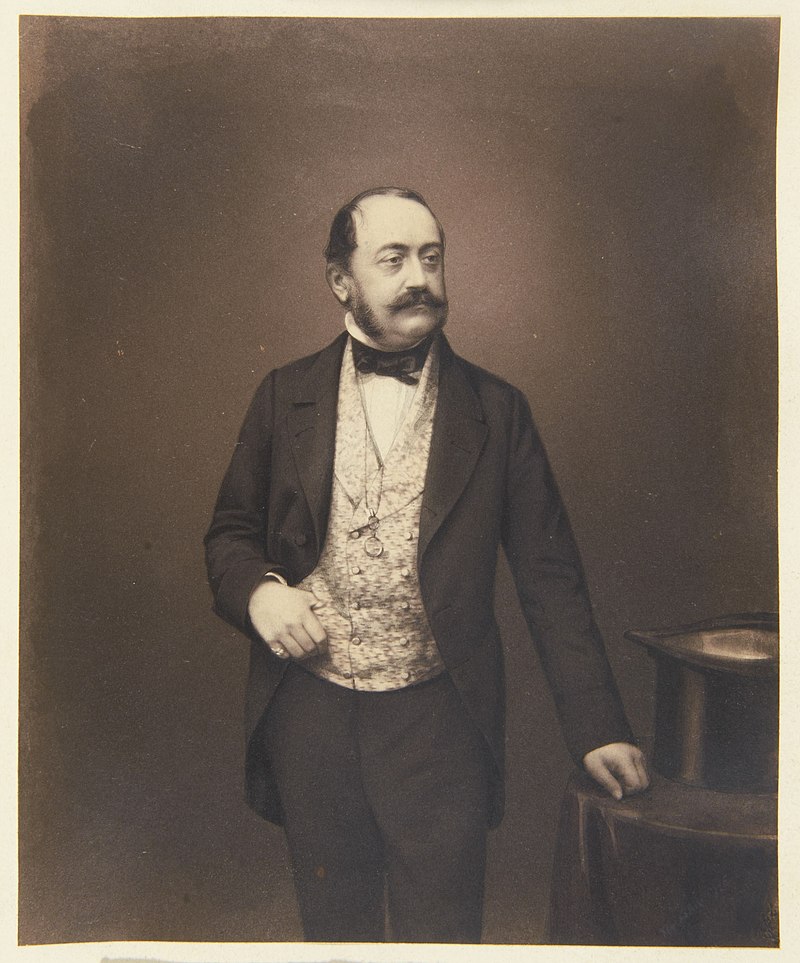by Scott Mehl © Unofficial Royalty 2018

Karl, Prince of Leiningen; Credit – Wikipedia
Karl, Prince of Leiningen was the half-brother of Queen Victoria of the United Kingdom. Prince Karl Friedrich Wilhelm Emich was born in Amorbach, Principality of Leiningen, now in Bavaria, Germany, on September 12, 1804. He was the first child of Emich Karl, 2nd Prince of Leiningen and Princess Victoire of Saxe-Coburg-Saalfeld. He had one younger sister:
- Feodora of Leiningen (1807 – 1872) – married Ernst I, Prince of Hohenlohe-Langenburg, had issue
Karl had an elder half-brother from his father’s first marriage to Countess Karoline Ernestine of Erbach-Schönberg:
- Prince Friedrich (1793 – 1800) – died in childhood
He also had a younger half-sister from his mother’s second marriage to Prince Edward, Duke of Kent:
- Queen Victoria of the United Kingdom (1819 – 1901) – married Prince Albert of Saxe-Coburg and Gotha, had issue
At the age of ten, Karl became Prince of Leiningen upon his father’s death in 1814. However, in 1806, the Principality of Leiningen had been mediatized – annexed to another state(s), while allowing certain rights to its former sovereign. The Principality of Leiningen ceased to exist and was divided between the Grand Duchy of Baden, the Kingdom of Bavaria, and the Grand Duchy of Hesse. The family retained Amorbach Abbey in Amorbach, which remains the family seat of the Princes of Leiningen.
Karl was educated privately at home before attending a private school in Bern, Switzerland. During this time, in 1818, his mother married Prince Edward, Duke of Kent, the fourth son of King George III of the United Kingdom, and became the Duchess of Kent. In 1819, the family moved to London where his younger sister, the future Queen Victoria, was born. His education continued at the University of Göttingen, where he studied law from 1821 to 1823.

Schloss Waldleiningen, photo by UrLunkwill – own work, CC BY-SA 3.0 de, https://commons.wikimedia.org/w/index.php?curid=9423055
Beginning in 1823, Karl took over the oversight of his estates and began construction of a new residence, Waldleiningen Castle (link in German), near Mörschenhardt, Grand Duchy of Baden, now in the German state of Baden-Württemberg.
On February 13, 1829, Karl married Countess Maria von Klebelsberg, the daughter of Count Maximilian von Klebelsberg and Maria Anna von Turba. The couple had two sons:
- Ernst Leopold, 4th Prince of Leiningen (1830 – 1904) – married Princess Marie of Baden, had issue
- Prince Eduard Friedrich (1833 – 1914) – unmarried
As the Prince of a mediatized house, Karl was a member of the First Chamber of the Estates Assembly of the Grand Duchy of Baden, the First Chamber of Estates of the Grand Duchy of Hesse, and the Imperial Council of the Kingdom of Bavaria. In 1837, he was the first person created a Knight of the Order of the Garter by his half-sister Queen Victoria.

Karl, Prince of Leiningen, c1835. source: Wikipedia
In April 1842, Karl was one of the 21 founders, and chairman, of the Mainz Aristocracy Association, which organized and promoted the settlement of German emigrants in Texas. In 1843, he became President of the Imperial Council in Bavaria, serving until 1848. During this time, Karl became known for his various reforms and he developed a reputation as a liberal reformer. Following the March Revolution, the Frankfurt Parliament established the new, and short-lived, German Empire with Archduke Johann of Austria being named as Regent. Because of Karl’s accomplishments in the Bavarian government and his ties to the British royal family, he was named the first Prime Minister of the Provisional Central Power on August 5, 1848. His tenure, however, would be very brief. Three weeks later, King Friedrich Wilhelm IV of Prussia signed the Treaty of Malmö, ending the First Schleswig War without consulting the Central Power. With no real power against Prussia, Karl resigned as Prime Minister on September 6, 1848.
Three years later, in May 1851, Karl resigned from his position as chairman of the Aristocratic Association and retired fully from public service. He suffered a severe apoplectic attack in 1855 which greatly affected his health. A second attack the following year proved fatal. Karl, Prince of Leiningen died at Waldleiningen Castle near Mörschenhardt, Grand Duchy of Baden, now in the German state of Baden-Württemberg, on November 13, 1856, with his sister Feodora by his bedside. He was buried in Amorbach Abbey in Amorbach, Kingdom of Bavaria, now in Bavaria, Germany until 1866 when his remains were moved to Waldleiningen Castle.
This article is the intellectual property of Unofficial Royalty and is NOT TO BE COPIED, EDITED, OR POSTED IN ANY FORM ON ANOTHER WEBSITE under any circumstances. It is permissible to use a link that directs to Unofficial Royalty.
